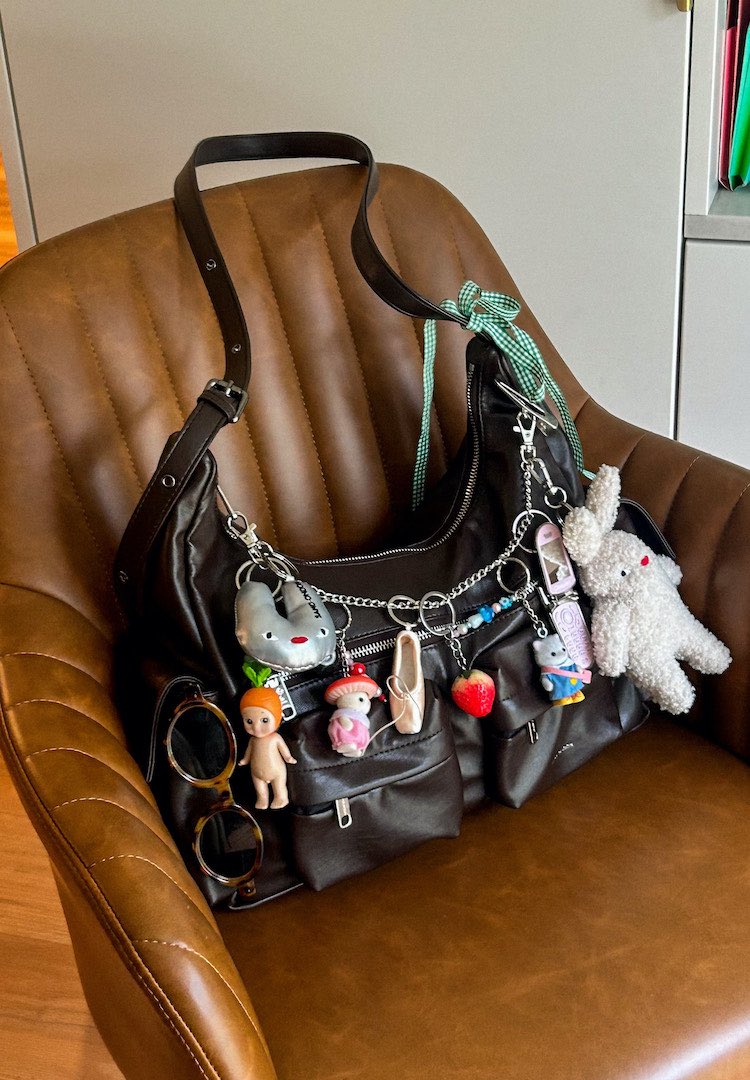08.12.25
Give Me Convenience or Give Me Death

Why spend time developing a personal style when TikTok can do it for you? It’s too easy! Every week, a new aesthetic surfaces, cycles through your feed, and disappears. Welcome to the era of hyper-curation; where social media thrives on endless micro-trends that burn bright and die fast, pushing creators into a constant loop of “what’s next?”
It’s not just fashion influencers keeping up with aesthetic cycles; it’s creative teams navigating shifting design trends, marketers chasing engagement, and brands wondering how to stand out without selling out. There’s this quiet pressure to keep reinventing yourself online – stylistically, creatively, visually. Social media doesn’t just encourage self-expression; it gamifies it. This kind of cultural whiplash leads to something we’re all feeling: trend burnout. And while keeping up can be fun, it can also start to feel like you’re creating more for the feed than for yourself. You don’t have to know what you like – just what’s trending.
This mirrors the way we approach personal style and content right now: it seems less about self-expression and more about performance. It’s all about looking like you didn’t try, even when you absolutely did. One particularly amusing example is the bag charm trend – keychains that look like a thoughtfully assembled collection of trinkets, when in reality, they were manufactured to look effortlessly unique. The same can be said for the endless stream of trending aesthetics, where “trend hoppers” cycle through styles at a breakneck pace, reselling anything that no longer fits what’s in right this moment.
And while brands aren’t always as flexible, they’re just as susceptible. Take the current obsession with bold minimalism in design – oversized type, ultra-clean layouts, high contrast color palettes. It’s everywhere. The temptation is to adopt the newest visual language before the competition does, or because the competition did. But at what cost? In a landscape of constant adjustment, it’s worth asking: Do I actually like this? Or did the Internet convince me I do?
Personal style – and creative identity – doesn’t have to mean rejecting trends altogether. It’s more about knowing when to jump in and when to skip it. The best creators aren’t immune to trends. The stuff that cuts through isn’t always the most polished or trendy, it’s the content that feels grounded, intentional, and real. It’s all about striking a balance; learning to play into some trends and leave some to other creators; finding what resonates with both the algorithm and your brand.
It’s a fine line between staying relevant and becoming just another copy of a copy. The Internet doesn’t need more beige content. What stands out is what feels real. Good content is responsive, not reactive. Originality isn’t about being first – it’s about not being fake.
So yes, convenience is tempting. The fast-moving trends, the plug-and-play aesthetics, the algorithm-ready packaging. But just like building a wardrobe, if you buy into everything, you’re left with nothing that really reflects you.
Real reflections by Erin Gieselman

Why spend time developing a personal style when TikTok can do it for you? It’s too easy! Every week, a new aesthetic surfaces, cycles through your feed, and disappears. Welcome to the era of hyper-curation; where social media thrives on endless micro-trends that burn bright and die fast, pushing creators into a constant loop of “what’s next?”
It’s not just fashion influencers keeping up with aesthetic cycles; it’s creative teams navigating shifting design trends, marketers chasing engagement, and brands wondering how to stand out without selling out. There’s this quiet pressure to keep reinventing yourself online – stylistically, creatively, visually. Social media doesn’t just encourage self-expression; it gamifies it. This kind of cultural whiplash leads to something we’re all feeling: trend burnout. And while keeping up can be fun, it can also start to feel like you’re creating more for the feed than for yourself. You don’t have to know what you like – just what’s trending.
This mirrors the way we approach personal style and content right now: it seems less about self-expression and more about performance. It’s all about looking like you didn’t try, even when you absolutely did. One particularly amusing example is the bag charm trend – keychains that look like a thoughtfully assembled collection of trinkets, when in reality, they were manufactured to look effortlessly unique. The same can be said for the endless stream of trending aesthetics, where “trend hoppers” cycle through styles at a breakneck pace, reselling anything that no longer fits what’s in right this moment.
And while brands aren’t always as flexible, they’re just as susceptible. Take the current obsession with bold minimalism in design – oversized type, ultra-clean layouts, high contrast color palettes. It’s everywhere. The temptation is to adopt the newest visual language before the competition does, or because the competition did. But at what cost? In a landscape of constant adjustment, it’s worth asking: Do I actually like this? Or did the Internet convince me I do?
Personal style – and creative identity – doesn’t have to mean rejecting trends altogether. It’s more about knowing when to jump in and when to skip it. The best creators aren’t immune to trends. The stuff that cuts through isn’t always the most polished or trendy, it’s the content that feels grounded, intentional, and real. It’s all about striking a balance; learning to play into some trends and leave some to other creators; finding what resonates with both the algorithm and your brand.
It’s a fine line between staying relevant and becoming just another copy of a copy. The Internet doesn’t need more beige content. What stands out is what feels real. Good content is responsive, not reactive. Originality isn’t about being first – it’s about not being fake.
So yes, convenience is tempting. The fast-moving trends, the plug-and-play aesthetics, the algorithm-ready packaging. But just like building a wardrobe, if you buy into everything, you’re left with nothing that really reflects you.
Real reflections by Erin Gieselman